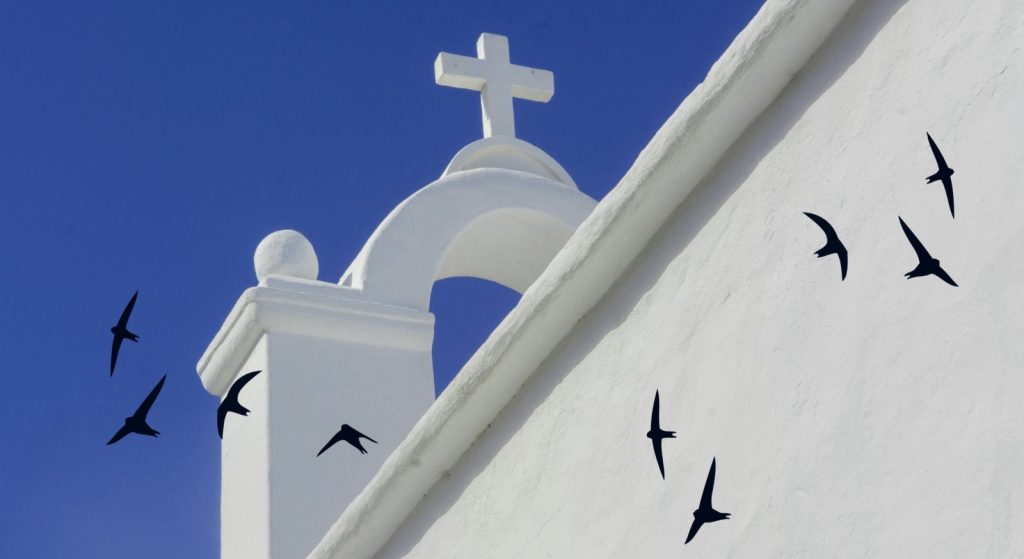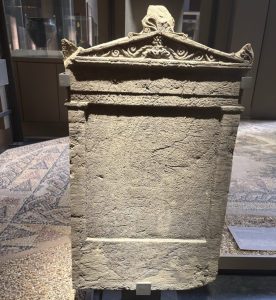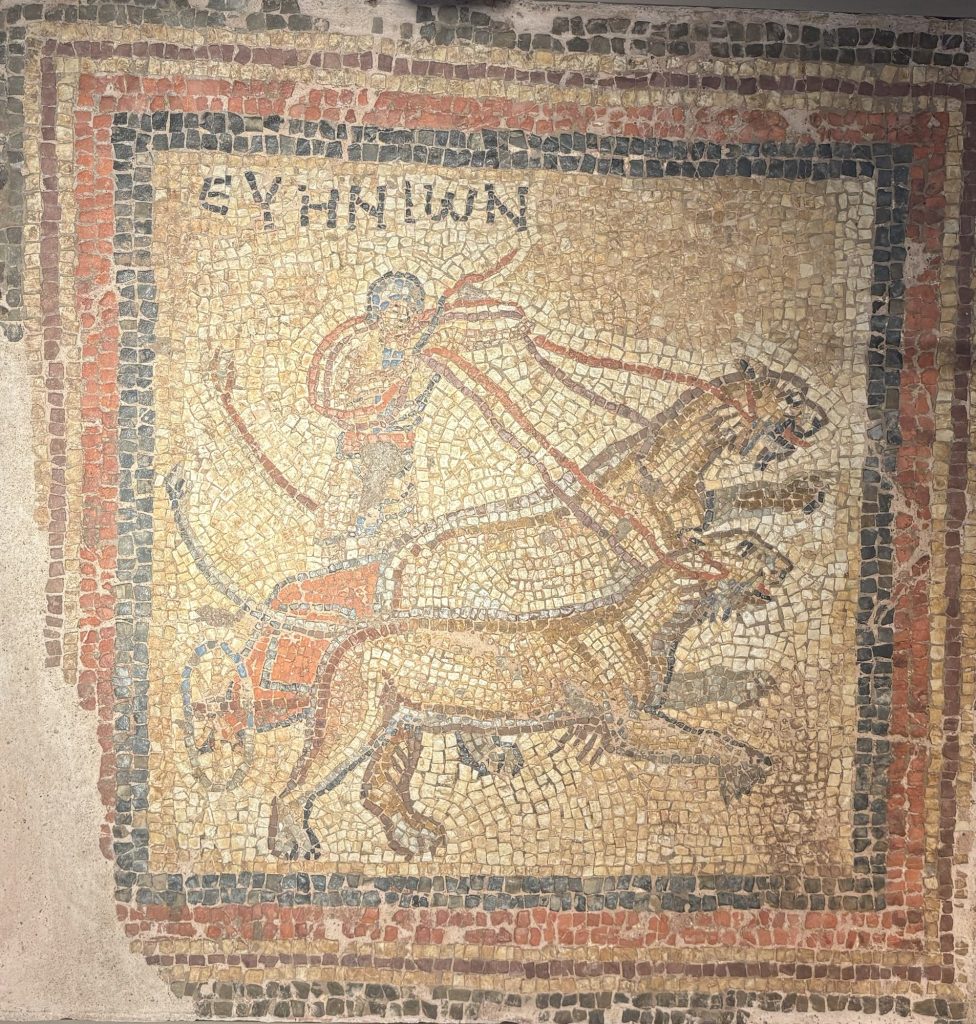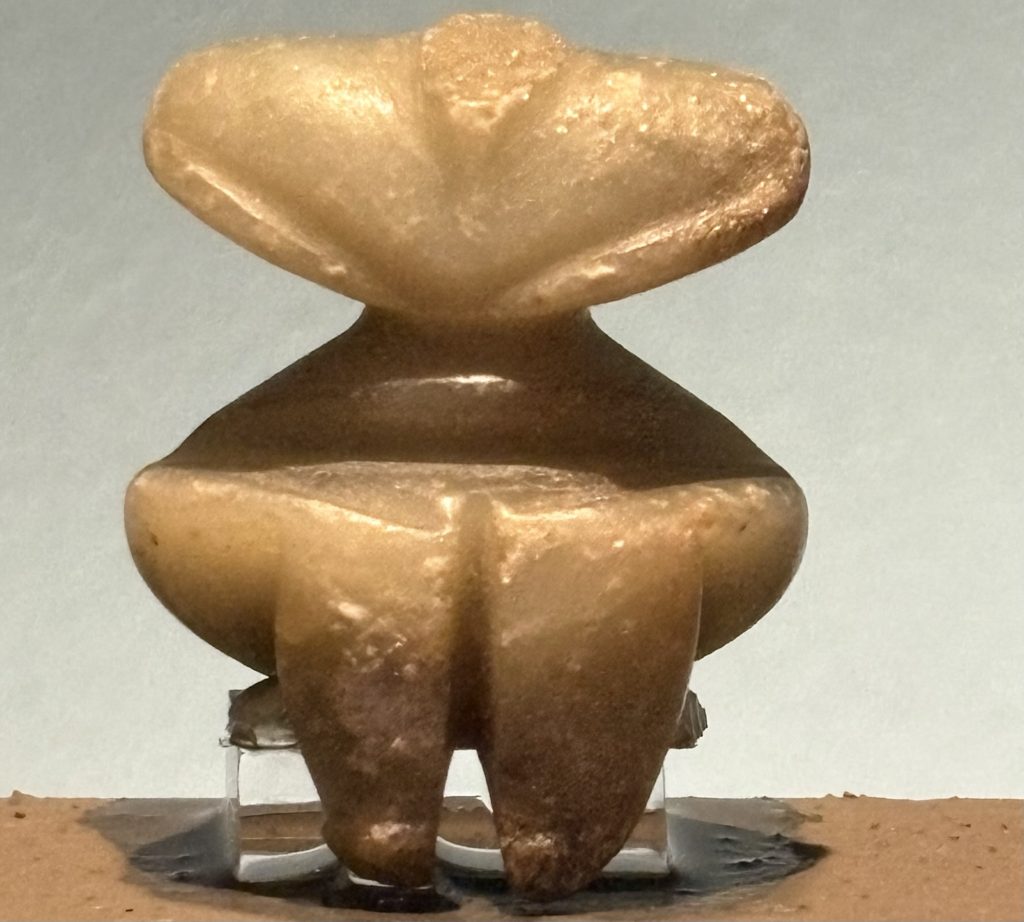
6. Holy Spirit Monday
Monday the 9th wasn’t just any old day in Greece. It was Orthodox Holy Spirit Monday, or Agio Pnevma as they call it. Coming 50 days after Easter it marks the moment when the Holy Spirit is said to have descended on Jesus’ disciples. It’s a sort of happy birthday for the Christian Church. On Sunday the bells had been ringing all over town and the faithful, mostly older people these days, were all dressed up. They seemed to be having a good time.
Over in the US the knuckleheaded leader of the no longer free world, who’s occasionally compared himself to the Lord, sent in the National Guard to support the mass ICE round up of what he calls insurrectionists and rapists. Obviously, you can’t love thy neighbour if they’re all like that.
As the bells tolled I’d watched swifts from my rooftop eyrie for a while. There are hundreds of them flying around at the moment, making their piercing sreeee-sreeee sound. There’s a couple who must have chicks in a hole in the wall of a building opposite mine and they’d been sreeee-sreeeeing around all morning, catching insects and returning now and then to the hole, briefly poking their beaks in to unload, then off they’d go again. It looked exhausting but they have special powers: they can remain airborne for up to 10 months at a time because they’re capable of unihemispheric slow-wave sleep, something I’d dearly love to have. One half of their brain stays awake while the other rests, so the ones in Kalamata, who’ve winged it over from sub-Saharan Africa, an epic journey of around 4,000 miles across deserts and the Mediterranean, did it all while half asleep.
The city was half asleep too, although not of the swifty kind. The day was an official public holiday for government employees, schools and banks, with many other places closed in reverence too. With a forecast of 37° by the afternoon, I decided to visit Kalamata’s Museum of Archaeology, which was open, and I’d been told was beautifully cool.
Sadly, although open, I’d been misinformed about the air con, which it didn’t have and, by the time I got there it was already 35°, so I paid my €10 and, armed with an informative booklet, went inside.
I’d have thought that the best layout of the exhibits would have been to start with the earliest stuff, with the rest following on in chronological order, but whoever had set it up had different ideas. As the booklet explained, the exhibition aimed to showcase the cultural identity of Messenia through a ‘museological’ design, with 4 large units, each one following the flow of the river Pamisos, divided into 10 thematic sections.
It was like being in a maze. One minute you’d be marvelling at the sight of a beautiful piece of gold jewellery from the 15th century BCE, then you’d turn a corner and see a mosaic floor from around 2,000 years later, then turning another you’d have gone back a few centuries. It was like being in a time machine with a dodgy gearbox.
Anyway, despite being slightly dizzying, it was enjoyable nonetheless and I took a few pictures. They’re in the order I came across them, ordained by museological design.

A wine decanter adorned with wreaths, dolphins and decorative themes, apparently related to the god Dionysus, the god of wine-making, orchards and fruit, vegetation, fertility, festivity, insanity, ritual madness, religious ecstasy and theatre. Quite a job. 3rd – 2nd c. BCE.

Inscribed grave stele from the village of Komboi (Ancient Kolonides). 2nd – 1st c. BCE.

Kylikes, typical drinking vessels – 14th c BCE

Vase, possibly an incense burner, for household or religious use. 2650 – 2200 BCE.

Beautifully intricate gold jewelry with vegetal motifs, worn by the deceased during burial, and presumably afterwards. 14th – 13th c. BCE.

Must be Roman but no accompanying description.

Pithamphora with stylised vegetal decoration. 16th – 15th c. BCE.

This was my fave – it’s 6-7,000 years old and is of a woman. It looks a bit like a Henry Moore, who generally created bigger stuff. This is only about an inch or so square. Apparently worn as a piece of jewellery. Late Neolithic period 5th – 4th millennium BCE.